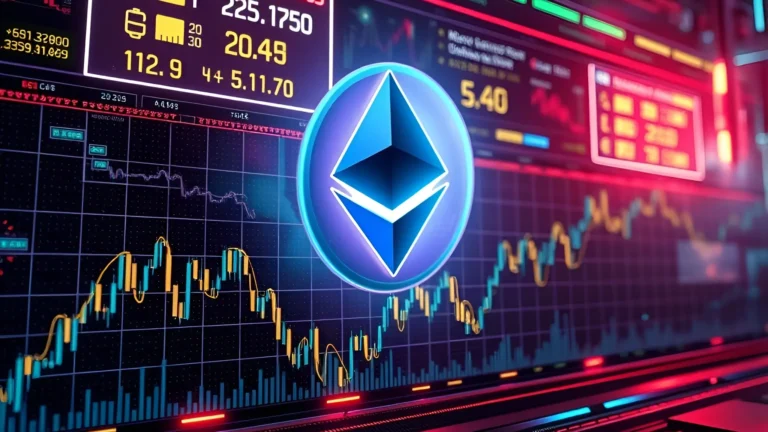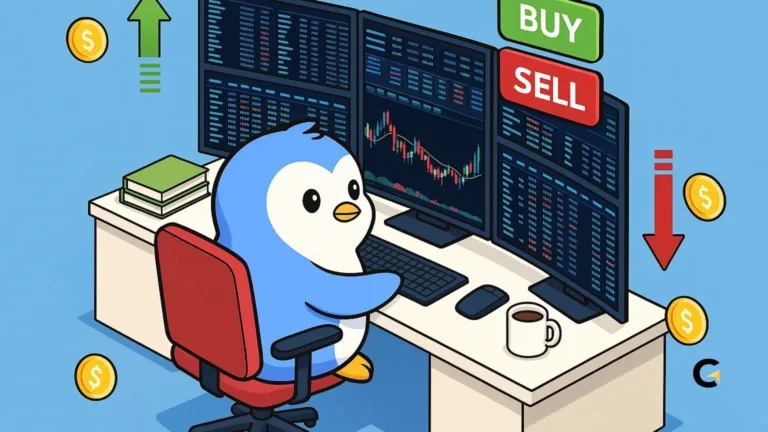XLM in 2050: Will It Explode by 100,000%?
Projecting the future of cryptocurrencies—especially looking as far ahead as 2050—is inherently speculative.
Yet, when grounded in historical data, evolving technology trends, and global financial dynamics, forecasts for the price of Stellar Lumens (XLM) can serve as a rough compass for long-term investors navigating the crypto space.
Stellar Lumens is no stranger to crypto veterans. Since its launch in 2014, the project has endured several market cycles, adapting and maturing with time.
Principal Conclusions
Hide-
Wide Price Forecast Range: XLM’s 2050 price could fall anywhere between $86 and $302, reflecting both bearish and bullish outcomes.
-
Key Drivers: Institutional adoption, strategic partnerships (IBM, MoneyGram), regulatory developments, and DeFi innovation will significantly shape XLM's price.
-
Analytical Methodology: A fusion of technical analysis, historical data, and long-term market sentiment expectations underpins the forecast.
-
High Uncertainty: Macroeconomic shifts, changing regulations, and blockchain competition can drastically alter projections.
-
Potential ROI: Ranges from +32,000% to +112,000% from current prices—depending on market trajectory.
Now, with a steadily growing ecosystem and refined infrastructure, XLM is regarded as one of the digital assets with substantial long-term growth potential—particularly in scenarios driven by widespread blockchain adoption across institutional and international financial systems.
XLM Price Predictions for 2050: From Realistic to Ambitious
Analysts and market observers offer a broad spectrum of predictions for XLM’s price by 2050.
These are typically modeled across three distinct scenarios: conservative (bearish), moderate (neutral), and optimistic (bullish).
Under the most restrained scenario, XLM could trade between $86 and $117. In a more stable or moderately positive outlook, prices are projected to land between $263 and $302.
In the most bullish scenario—assuming explosive institutional adoption and deep integration with financial technologies—XLM may surge beyond the $300 threshold.
Most notably, the average estimate under moderate scenarios hovers around $265.55, which reflects a dramatic surge from XLM’s current market price (still under $0.20 as of mid-2025).
Thus, the return on investment (ROI) potential is estimated to range from +30,000% to over +112,000%, contingent on how the global landscape unfolds.
Why Stellar Lumens Matters: Understanding the Project’s Core Value
To truly grasp XLM’s long-term potential, it’s important to understand what Stellar Lumens is—and what sets it apart from the sea of other digital assets in the market.
Stellar’s Mission and Origins
Stellar was co-founded in 2014 by Jed McCaleb (also a co-founder of Ripple) and Joyce Kim. The platform emerged from a desire to build a more inclusive financial system, particularly targeting underserved regions where access to traditional banking is limited.
At its heart, Stellar aims to deliver fast, low-cost, and transparent cross-border transactions.
Unlike many other blockchains that center on smart contracts or decentralized apps (dApps), Stellar focuses on underpinning the global financial infrastructure—serving as a digital bridge between fiat and crypto currencies.
XLM: The Native Asset Powering the Network
XLM (or Lumens) is the native token that powers the Stellar network. It plays a key role in facilitating liquidity for asset exchanges on the platform.
Unlike Bitcoin, which acts as a store of value, or Ethereum, which powers a wide range of decentralized applications, XLM functions as a “bridge asset,” seamlessly connecting different currencies within Stellar’s ecosystem.
Key technical features of Stellar include:
-
Total Supply: Approximately 50 billion XLM.
-
Consensus Protocol: Utilizes the Federated Byzantine Agreement (FBA), which enables faster and more scalable transactions compared to proof-of-work systems like Bitcoin.
The Factors That Will Influence XLM’s Future Price
The price of any digital asset is influenced by a web of factors. For XLM, several major variables could have outsized impact on its long-term price trajectory:
1. Institutional Adoption & Strategic Partnerships
Stellar has secured partnerships with major players like IBM, MoneyGram, and is reportedly exploring collaborations with Mastercard.
These alliances are designed to integrate Stellar’s network into the traditional financial system.
As more institutions rely on Stellar for cross-border remittances and payments, demand for XLM could surge—directly influencing its market value.
2. Regulatory Landscape for Cryptocurrencies
Regulations are a double-edged sword. On one hand, regulatory clarity can build institutional trust and accelerate adoption. On the other, overly restrictive policies can stifle innovation and suppress growth.
XLM’s price will be deeply affected by how global governments—particularly in the U.S., EU, and Asia—choose to regulate crypto assets and blockchain technology over the coming decades.
3. DeFi Innovation & CBDC Integration
One of Stellar’s most compelling growth prospects lies in its potential to serve as a platform for CBDCs (Central Bank Digital Currencies).
With central banks around the world exploring digital versions of their national currencies, Stellar’s infrastructure—designed to bridge fiat and crypto—positions it as a promising candidate.
If Stellar secures a role in powering CBDCs, the resulting boost in utility and visibility could propel XLM’s value sharply upward.
4. Token Supply Dynamics
XLM is not inherently inflationary, but future mechanisms such as token burns, airdrops, or community-driven distribution models could impact effective supply and, in turn, influence market value.
Supply shocks often contribute to volatility but can also drive scarcity-based value appreciation.
5. Competition in the Blockchain Arena
Stellar operates in a fiercely competitive landscape. It contends with rivals like Ripple (XRP), traditional financial systems like SWIFT gpi, and next-gen blockchain protocols such as Solana, Avalanche, and various Ethereum Layer-2 solutions.
Stellar’s ability to maintain and enhance its competitive edge will play a crucial role in determining its relevance and attractiveness to users and institutions alike.
How Analysts Forecast XLM Prices
Predicting prices 25 years out is no easy task. However, analysts rely on a blend of methodologies to develop forward-looking models:
-
Historical Analysis: Tracking XLM’s price patterns since 2015 and their correlation with external catalysts.
-
Technical Indicators: Utilizing metrics like moving averages, RSI, trading volume, and sentiment tools such as the Crypto Fear & Greed Index.
-
Statistical Models: Benchmarking growth curves from other major blockchain projects to create long-term forecasts.
-
Macroeconomic Outlooks: Assessing broader trends in blockchain adoption, DeFi evolution, and regulatory developments globally.
XLM 2050 Price Projections
| Scenario | Minimum Price (USD) | Average Price (USD) | Maximum Price (USD) |
|---|---|---|---|
| Conservative | $86 | $102.93 | $117.48 |
| Moderate | $263 | $265.55 | $302 |
| Optimistic | $263 | $280 (analyst consensus) | $302+ |
ROI Potential:
-
Conservative Scenario: Up to +30,000%
-
Moderate Scenario: Between +97,000% and +112,000%
-
Extreme Bullish Scenario: Above +112,000% from current prices
Closing Thoughts: Between Hope and Caution in Crypto
Imagining XLM reaching hundreds of dollars by 2050 is certainly exciting. But it’s crucial to remember that the crypto market is highly volatile, and speculation alone should never be the foundation of an investment strategy.
Over time, a confluence of factors—from regulatory changes and technological breakthroughs to competitive pressures—will shape Stellar’s journey.
For investors, whether retail or institutional, investing in XLM demands more than just optimism. It requires in-depth research, risk management discipline, and mental preparedness for volatility.
Predictions are not promises. But a solid understanding of projects like Stellar Lumens equips us to move into the future with greater clarity and conviction—because in the world of crypto, opportunity often favors those who are ready.
Frequently Asked Questions (FAQs)
What are the key factors that could impact XLM’s future price?
Institutional adoption, regulatory clarity, strategic partnerships, and DeFi/CBDC innovation are the main drivers.
How are long-term price forecasts made?
Through a mix of historical data analysis, technical indicators, statistical modeling, and macroeconomic projections.
Can these forecasts be considered guarantees?
No. Given crypto’s extreme volatility, long-term forecasts should be viewed as directional—not definitive.
Where can I buy or store XLM?
XLM is listed on major exchanges like Binance, Kraken, and Coinbase. For storage, use wallets that support Stellar—both hardware and software options are available.
What’s the best- and worst-case scenario by 2050?
Worst-case: XLM settles in the lower price bands (~$86).
Best-case: XLM exceeds $300, driven by widespread adoption and strategic integration.







